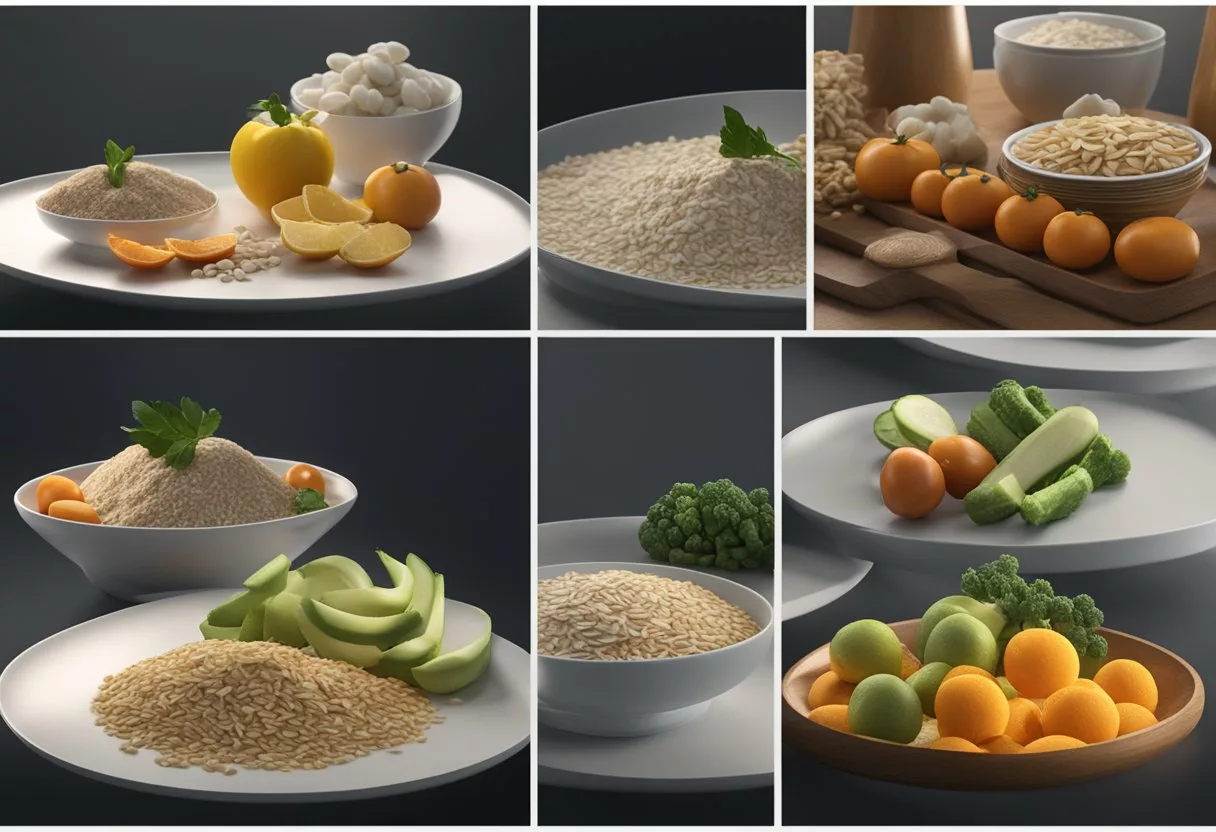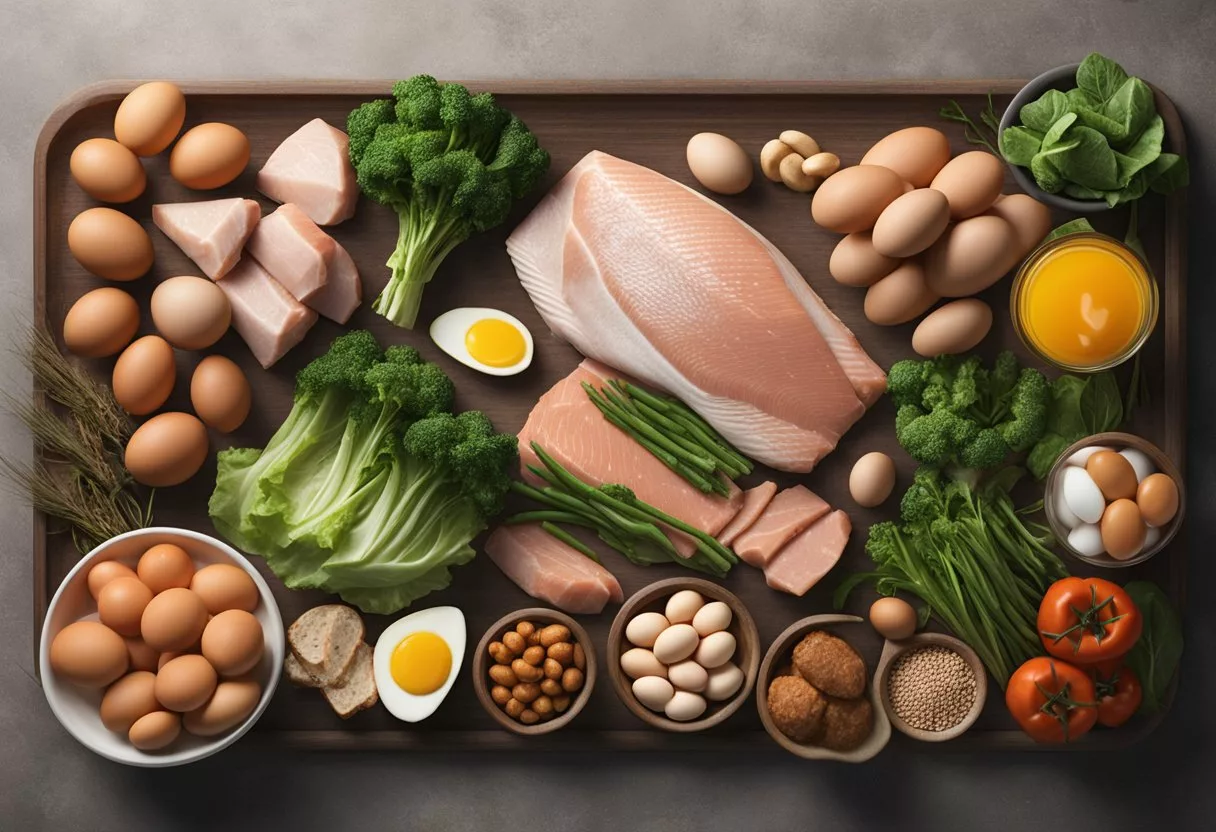The Dukan Diet is a popular low-carbohydrate, high-protein diet designed by Dr. Pierre Dukan, a French general practitioner specializing in weight management. It focuses on eating lean protein, drinking plenty of water, and incorporating daily physical activity, such as a 20-minute walk. Developed in the 1970s, this diet has gained traction for its four-phase structure aimed at facilitating weight loss and maintaining long-term results.

The phases of the Dukan Diet are structured to adapt to different stages of weight loss and stabilization. Starting with the “Attack” phase, individuals consume only protein-rich foods and move through the “Cruise,” “Consolidation,” and “Stabilization” phases. Each phase gradually reintroduces other food groups while respecting the diet’s low-carb and low-fat principles.
Despite its popularity, the Dukan Diet has its share of criticisms and potential health risks. It’s important for individuals considering the diet to evaluate if it aligns with their health needs and lifestyle. Learn more about the Dukan Diet here.
Key Takeaways
- The Dukan Diet is a high-protein, low-carb diet.
- It consists of four phases for weight loss and maintenance.
- Daily exercise and hydration are key components of the plan.
Origins and Fundamentals

The Dukan Diet is a high-protein, low-carb diet that has been popularized for its approach to weight loss. It was developed by Pierre Dukan, a French general practitioner, and focuses on specific dietary phases.
Pierre Dukan and the Diet’s Development
Pierre Dukan developed the Dukan Diet in the 1970s. The diet emerged from his work with patients struggling to lose weight. He proposed a meal plan centered around lean protein, believing it was crucial for weight loss. His theory was that a high-protein, low-carb diet could shift the body into a more effective fat-burning mode.
Dukan’s approach quickly gained traction. By promoting an increased intake of lean protein, he claimed it helped reduce hunger and stabilize blood sugar levels. Over the years, the diet gained international fame, driven by success stories and media coverage. Today, the Dukan Diet is known globally, although it also faces criticism for potential health risks and nutrient restrictions.
Core Principles of the Dukan Diet
The Dukan Diet relies on four distinct phases: Attack, Cruise, Consolidation, and Stabilization. Each phase has specific rules and foods that are allowed. The Attack Phase is the most restrictive, allowing only lean protein and oat bran. It aims to kickstart rapid weight loss.
In the Cruise Phase, dieters alternate between pure protein days and days when non-starchy vegetables are added. This phase continues until the target weight is reached.
The Consolidation Phase gradually reintroduces carbs and fats while focusing on preventing weight regain. Finally, the Stabilization Phase aims to maintain weight loss with a balanced approach, while still incorporating high-protein days weekly.
This structured approach reflects Pierre Dukan’s belief in a disciplined, protein-centric diet for sustained weight management.
Dukan Diet Phases

The Dukan Diet is divided into four distinct phases: Attack, Cruise, Consolidation, and Stabilization. Each phase has its own set of rules and goals, from rapid weight loss to long-term maintenance.
Attack Phase: Kickstarting Weight Loss
The Attack Phase is designed to produce rapid weight loss. During this phase, participants consume only foods from the “pure protein” list. This includes lean meats, fish, non-fat dairy, and certain other protein-rich foods.
By limiting carbohydrates and fats, the body begins to burn stored fat for energy. This phase typically lasts from two to seven days, depending on how much weight one needs to lose.
Drinking plenty of water and taking a daily 20-minute walk are also essential components of this phase. These habits help to flush out toxins and kickstart the metabolism.
Cruise Phase: Introducing Vegetables
In the Cruise Phase, participants can start to include non-starchy vegetables in their meals. Foods like leafy greens, broccoli, and cauliflower are added to the diet while maintaining a focus on protein.
Days alternate between pure protein and protein with vegetables. This phase continues until the person reaches their target weight, which can take several weeks or months.
This phase helps to gradually introduce more variety into the diet without regaining the lost weight. Exercise remains important, with a recommended 30-minute walk each day.
Consolidation Phase: Preventing Weight Regain
The Consolidation Phase aims to prevent the body from regaining the lost weight. This phase lasts for five days for every pound lost during the previous phases. The key is to gradually reintroduce foods like fruits, whole grains, and cheese.
Participants are also allowed two “celebration” meals per week, where they can eat whatever they want. However, one day each week is designated as a pure protein day to maintain weight loss.
This phase helps to establish a long-term eating pattern that includes a broader range of foods while keeping the weight off.
Stabilization Phase: Maintaining Weight Loss
The Stabilization Phase is designed for lifelong maintenance of weight loss. Participants return to eating what they like but must follow three simple rules to prevent weight regain.
First, one day a week should still be a pure protein day. Second, oat bran should be consumed daily. Lastly, exercise, such as a daily walk, remains part of the routine.
This phase is less restrictive and aims to help individuals maintain their new weight through balanced eating habits and regular physical activity.
Dietary Guidelines and Restrictions

The Dukan Diet emphasizes high-protein foods and imposes strict limits on fats and carbohydrates. This section will detail what foods are allowed and which are prohibited on the diet.
Allowed Foods Within the Dukan Diet
The Dukan Diet encourages the consumption of lean proteins such as chicken, turkey, and fish. Lean meat like beef and fat-free dairy products are also staples.
Oat bran is another key element. It’s included for its high fiber content, aiding digestion and providing a sense of fullness.
Non-starchy vegetables are allowed in specific phases. These include leafy greens, broccoli, and bell peppers, which provide essential nutrients while maintaining low carbohydrates.
Water consumption is vital, encouraging dieters to drink plenty to stay hydrated and aid in digestion. The diet also suggests regular intake of eggs, which are versatile in meal planning and rich in protein.
Foods to Avoid and Restrictive Nature of the Diet
The Dukan Diet strictly limits foods high in carbohydrates and fat. This means that foods like bread, pasta, and sugary snacks are off-limits. Even fruits are restricted due to their natural sugar content.
Fat-free dairy and lean meats are preferred over regular dairy and fatty cuts of meat. The restrictive nature particularly impacts those following a vegan lifestyle, as many plant-based proteins are excluded.
High-protein diets like Dukan’s can lead to a lack of variety, potentially causing nutrient deficiencies if not carefully managed. The diet is also known for its list of 100 foods you can eat, which can be quite limiting for some.
Maintaining true weight involves careful adherence to these guidelines, which include vigilant avoidance of starchy vegetables, fatty foods, and high-carb items, ensuring that the dieter stays within the restrictive framework of the diet.
Health Considerations and Risks

The Dukan Diet is known for its high protein intake and low carbohydrate structure. Here, we will explore the potential benefits for weight loss and health, the health risks and concerns related to this diet, and adjustments for specific health conditions.
Potential Benefits for Weight Loss and Health
The Dukan Diet emphasizes high protein intake, which can help reduce hunger and increase feelings of fullness. This may lead to short-term weight loss, as people tend to eat fewer calories overall.
Some research suggests that high protein diets can help preserve muscle mass during weight loss. This can be important for maintaining a healthy metabolism. For many, rapid weight loss can be highly motivating.
While the diet’s structure can make it easier to follow for some, it helps to monitor one’s health closely. Consulting with a dietitian or doctor can ensure the diet aligns with one’s individual health needs and adaptations.
Health Risks and Concerns Related to the Diet
The Dukan Diet is highly restrictive, eliminating various food groups including many fruits and vegetables. This can make it challenging to get enough vitamins and minerals like Vitamin A, which can lead to nutritional deficiencies.
High protein intake can also strain the kidneys, particularly in individuals with pre-existing kidney conditions or those predisposed to kidney issues. Pregnant or breastfeeding women and those with liver disease should avoid this diet due to potential complications.
Potential side effects include bad breath, constipation, and fatigue. It can also be difficult to sustain long-term, leading to weight regain after stopping the diet. Consulting with a nutritionist can help identify these risks and possibly mitigate them.
Adjustments for Specific Health Conditions
People with diabetes need to be cautious on the Dukan Diet due to its low-carb nature. Blood sugar levels should be closely monitored, and adjustments should be made as advised by a healthcare provider.
For those prone to eating disorders, the Dukan Diet’s restrictive nature can be triggering. Mental health considerations are essential, and the support of a coach or dietitian can provide necessary guidance.
Older adults or those with specific dietary needs should consider modified versions of the diet. Customization might include more balanced intake of carbohydrates and fats while maintaining high protein levels to ensure overall health is not compromised.
Implementation and Lifestyle

The Dukan Diet emphasizes a low-carb, high-protein meal plan alongside regular exercise. It requires sticking to specific food lists and phases.
Guidelines for Daily Eating and Meal Planning
The Dukan Diet consists of four phases: Attack, Cruise, Consolidation, and Stabilization. During the Attack phase, individuals consume lean protein and oat bran. Foods like chicken, turkey, and eggs are staples. Drinking plenty of water and taking daily walks are crucial.
In the Cruise phase, vegetables are added but starchy vegetables are still restricted. Meal planning here involves alternating days of pure protein with days of protein and vegetables.
For the Consolidation phase, the diet reintroduces some fruits, whole grains, and cheeses. This phase is designed to prevent rebound weight gain. A weekly “pure protein” day is recommended.
The Stabilization phase involves long-term maintenance, where any food is allowed but the core principles of lean protein and exercise are maintained. Oat bran intake continues daily, and walking remains a key element.
Sustainable Eating Habits Post-Diet
After completing the initial phases, transitioning into a sustainable eating routine is essential. This means keeping up with regular exercise like daily walks and maintaining healthy eating habits developed during the diet.
Continued high protein intake is encouraged while incorporating a balanced mix of fruits, vegetables, and whole grains.
Support systems can be beneficial during this phase. Keeping in contact with a dietitian or joining support groups may help maintain long-term success.
The key is to create a balanced meal plan that is both nutritious and enjoyable, ensuring that the habits formed become a permanent lifestyle change. A focus on whole and unprocessed foods along with regular physical activity helps maintain the weight loss achieved through the Dukan Diet.
Additional Resources and Support

For those considering or already following the Dukan Diet, there are several resources and support options available to help you succeed. These include coaching services, community support, books, apps, and various online tools.
Coaching and Community Support Options
Coaching services can be very helpful for individuals who want personalized guidance while on the Dukan Diet. Some services offer one-on-one coaching with certified dietitians or nutritionists. These professionals can provide tailored meal plans, regular check-ins, and motivation. Online forums and social media groups are also available where dieters can share experiences, tips, and recipe ideas.
Community support includes online forums and Facebook groups where members share experiences and advice. Participating in these communities can provide a sense of accountability and motivation. Many people find connecting with others facing the same challenges can make it easier to stick to the diet.
Books, Apps, and Online Tools
Books on the Dukan Diet can provide detailed guidance and meal plans. Popular titles include “The Dukan Diet” by Pierre Dukan and “The Dukan Diet Made Easy.” These books offer step-by-step instructions and plenty of recipes to keep meals interesting.
There are also several apps designed to help track progress, log meals, and find Dukan Diet-friendly recipes. These apps often include features like shopping lists and daily reminders, making it easier to stay on track. Websites dedicated to the Dukan Diet offer various tools, including meal planners and forums for additional support.
Using these resources can make it easier to follow the Dukan Diet and achieve the desired weight loss goals. Whether through professional coaching or utilizing technology, staying informed and connected can significantly enhance the dieting experience.
Frequently Asked Questions
The Dukan diet is known for its high-protein, low-carb approach, which is divided into four distinct phases. This eating plan has specific guidelines about what foods to eat and avoid, and aims to support weight loss through these structured phases.
How does the Dukan diet promote weight loss?
The Dukan diet promotes weight loss by increasing protein intake and limiting carbohydrates. This helps to reduce appetite and boost metabolism. Protein can make you feel full faster, which may help reduce overall calorie intake.
What foods are permitted during the Attack phase of the Dukan diet?
During the Attack phase, you can eat unlimited lean protein, such as chicken, fish, and eggs. Non-fat dairy products, such as yogurt and cottage cheese, are also allowed. Additionally, you must consume 1.5 tablespoons of oat bran daily.
What are the potential downsides of following the Dukan diet?
The Dukan diet may eliminate many healthy foods, like fruits and whole grains, which could lead to nutrient deficiencies. Its restrictive nature can also make it difficult to stick to in the long term. Some people might experience side effects like bad breath and constipation.
Can you eat eggs while on the Dukan diet, and if so, how many?
Yes, you can eat eggs while on the Dukan diet. There is generally no limit on the number of eggs you can consume, especially during the Attack and Cruise phases. However, if you have high cholesterol, it’s best to discuss egg consumption with your doctor.
What is the typical meal plan for a week on the Dukan diet?
A typical meal plan includes breakfast with scrambled eggs and lean ham, lunch with grilled chicken and a side of non-fat yogurt, and dinner with baked fish and cottage cheese. Snacks can include lean deli meat or additional servings of non-fat yogurt and oat bran.
Which foods are strictly prohibited on the Dukan diet?
Foods that are strictly prohibited include starches (like potatoes and rice), sugar, high-fat foods, and most fruits. During the initial phases, you must avoid all carbohydrates, which are gradually reintroduced in later stages. This helps keep your carb intake low initially to jumpstart weight loss.
